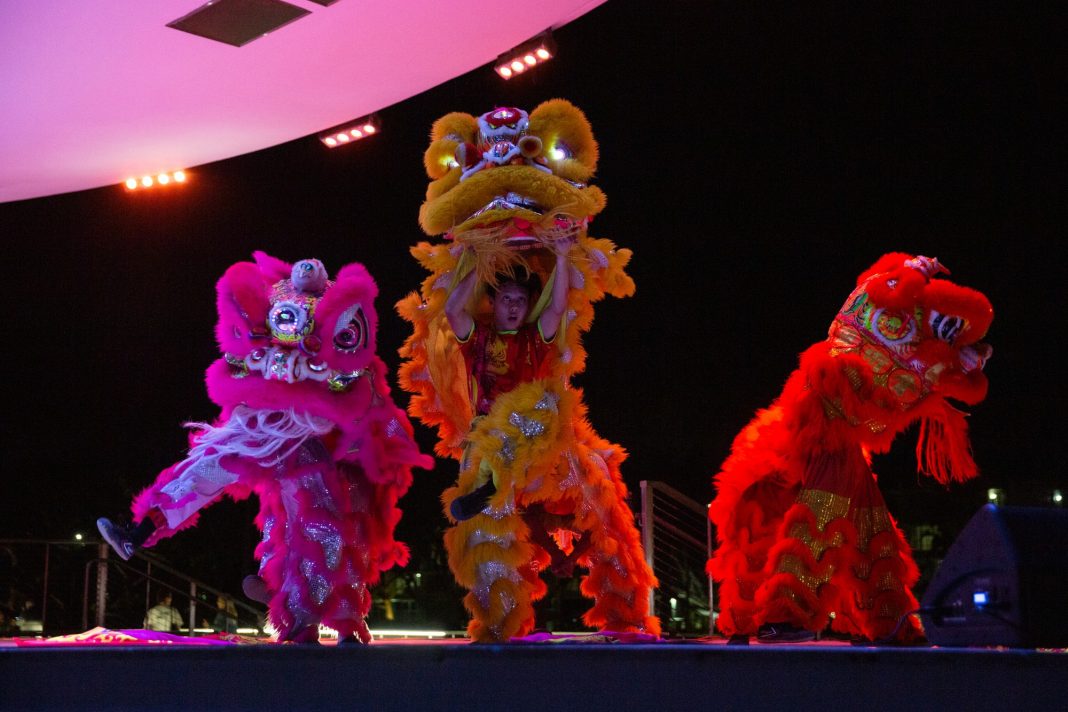
Music, dancing and the smell of delicious foods from across Asia filled the air on Monday evening as the Asian American Student Association (AASA) rang in the Lunar New Year with a campus-wide festival.
Their preparations culminated in an epic festival that welcomed hundreds of people to Lakeside Patio to usher in the year of the rabbit.
“We have tents, a bunch of lights, great food, and amazing performers,” Mintra Putlek, a senior at UM and the president of AASA, said. “We try to mimic the conjunction of the actual celebrations which is what brings life to the event.”
Lunar New Year is a celebration of the beginning of a new year on the lunisolar calendar. The lunar calendar is based on the cycles of the moon, so the dates of the holiday vary slightly from year to year. The Chinese zodiac pairs animal signs to each lunar year in a cycle of 12 years and 2023 falls on the year of the Rabbit.
Lunar New Year is celebrated by numerous Asian countries and cultures, however the celebratory customs of each differ. AASA looked to share the joy and sense of community that come with the holiday by including traditions and performances from a variety of cultures.
“The Lunar New Year festival is one of the biggest events of the year for our organization,” Eva Ni, a member of the CSSA said.
The event is organized annually on campus providing students with a space to celebrate and feel connected to their culture, especially when many students are far from home.
“Asians make up a very significant majority of the world population, but being in a place where it is not predominantly Asian, one can sometimes feel out of touch with their culture,” Putlek said. “Hosting these large-scale events at UM helps bring the community together, harbors pride, joy, and a sense of connection.”
Lunar New Year also serves as an educational opportunity for students from all cultures to learn about the holiday’s customs.
“The hardest part of making the festival was finding the best way to convey your own culture to those who are not part of it,” Ni said.
In conjunction with music, food and entertainment, guests engaged with a variety of student organizations that were hosting various activities at the event. Guests were given a chance to play traditional games from different countries and learn more about each culture. There were Japanese, Chinese, Vietnamese and Indian games for the guests to enjoy. Each booth was set up by a different cultural organization from UM.
“I realized that the customs of Asian cultures differed vastly from country to country. I participated in almost all of the booths,” said Derin Kalkanoglu, a sophomore majoring in biomedical engineering. “ I played Carrom which is an Indian board game. Then I went over to the CSSA booth and tried to play the huge instrument called Guzheng. It was so fun.”
At the forefront of this celebration, however, was the food. Customary Lunar New Year foods are an essential part of the New Year celebration and bring communities together.
“The Lunar New Year is about reuniting with loved ones and sharing food,” Joy Wang, a junior and the former vice president of CSSA said.
AASA prepared Sushi Maki and Chinese food options for the guests to enjoy as they waited for performances to kick off.
“The line for the food was ridiculously long, but it was totally worth the wait,” shared Mercan Yanyali, a freshman at UM.
The night concluded with a series of both traditional and modern performances on the lakeside patio stage.
“It was amazing seeing the traditional lion dance followed by the UM’s K-pop dance team,” added Yanyali.
To learn more about the activities, organizations, and performances that took place in the Lunar New Year festival, check out @aasaum on Instagram.





